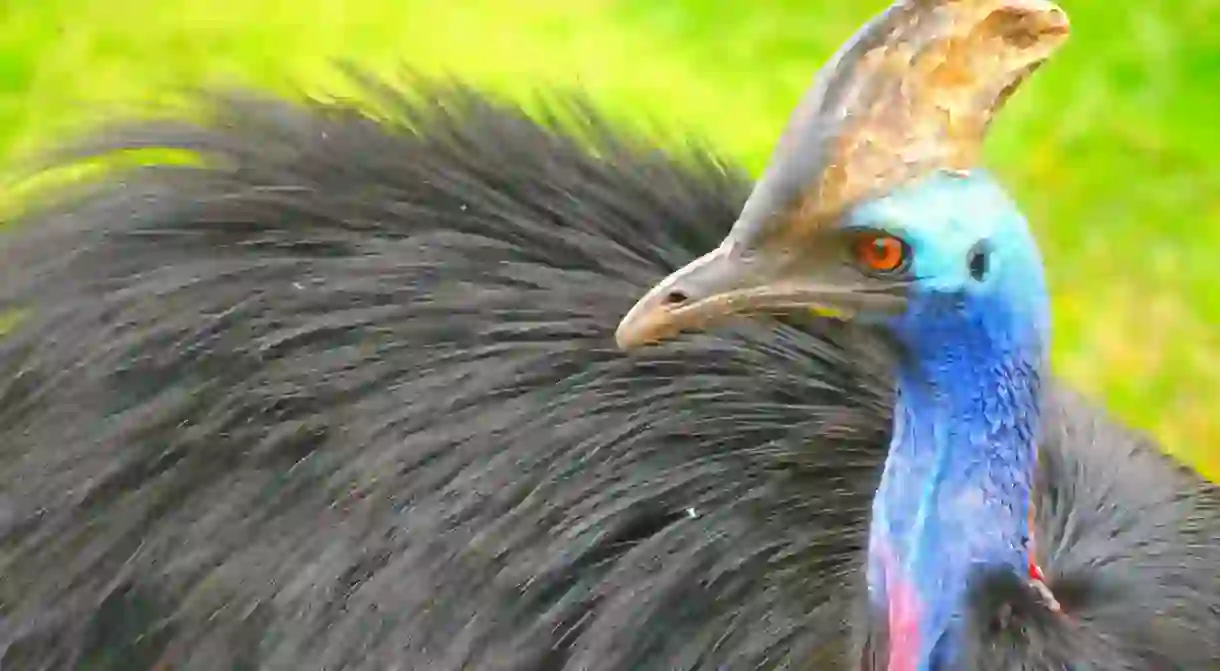World's Most Dangerous Bird: 7 Facts About The Cassowary

We all know the ostrich is the largest bird in the world, followed by the emu, but what many people are not aware of is the third-largest bird in the world, the cassowary. This endangered animal’s name is derived from two Papuan words – kasu, meaning horned, and weri, meaning head (more specifically their prominent casque) – and has been named the most dangerous bird in the world.
They are descended from dinosaurs
Some have claimed the cassowary to look like a ‘giant prehistoric turkey’, but they are in fact descendants of dinosaurs. Looking somewhat like a combination of a turkey and an ostrich, their body features different colours and textures (from feathers to skin) like that of a dinosaur, from their large, black-feathered body to the bluish skin on their head and reddish skin on their neck to blue-grey coloured legs. Their descending from dinosaurs supports the classification of the cassowary as the ‘most dangerous bird on Earth’.

They are flightless birds
Due to their lack of a chest-bone structure allowing the support of muscles necessary to fly, the cassowary, like the emu and the ostrich, is another flightless bird. Although they cannot fly, they can surely put up a fight, jumping as high as two metres from the ground, and they can run at a speed of up to 50 kilometres per hour.
They use their casque and claw in self-defence
As they cannot fly away from a fight, cassowaries have adapted to use their casque and claw to protect themselves and stand their ground. The casque is a helmet-like crest located on the top of their head that grows to around 15 centimetres in length and 17 centimetres in height that prevents any skull injuries to the cassowary during fights. In a fight they will stand as tall as possible, ruffle their feathers and hiss, and lower their head to show off their casque before attacking.
Not only do they make use of the casque, but their middle claw acts like a dagger, standing at 12 centimetres in length, and can cause serious damage – it’s quite capable of killing a dog.

They will not attack for no reason
Despite its reputation, the cassowary will not attack for no reason. They are quite shy creatures and would much rather avoid confrontation where possible; however, they are very territorial and defensive of their young. More often than not, the main reason for attacking is self defence for the aforementioned reasons, as well as due to expecting food from the people who approach them.
They attack up to 200 people every year
Swiftly karate-kicking whoever approaches them with their powerful legs, over 200 cassowary attacks are reported every year. Of these 200, 70% of attacks occur due to people trying to get up close to the cassowary, wanting to feed them, causing the cassowary to feel threatened. Although there are hundreds of attacks every year though, the last recorded death caused by a cassowary was in 1926.

They are the heaviest bird in Australia
Standing between 1.5 and 2 metres in height and weighing anywhere from 110 pounds to over 160 pounds, the cassowary has been named the heaviest bird in Australia. Although full-grown females are larger and more aggressive than males, both are unpredictable birds.
They are responsible for keeping our rainforests healthy
Located in the far north of Australia, generally in the rainforests of north Queensland, the cassowary is responsible for the distribution and germination of plants throughout the area. Being frugivores (fruit eaters), various undigested seeds and berries are released through their defecation, allowing the seeds to grow into new plants. As a result, cassowaries are the natural gardeners of the rainforests!














